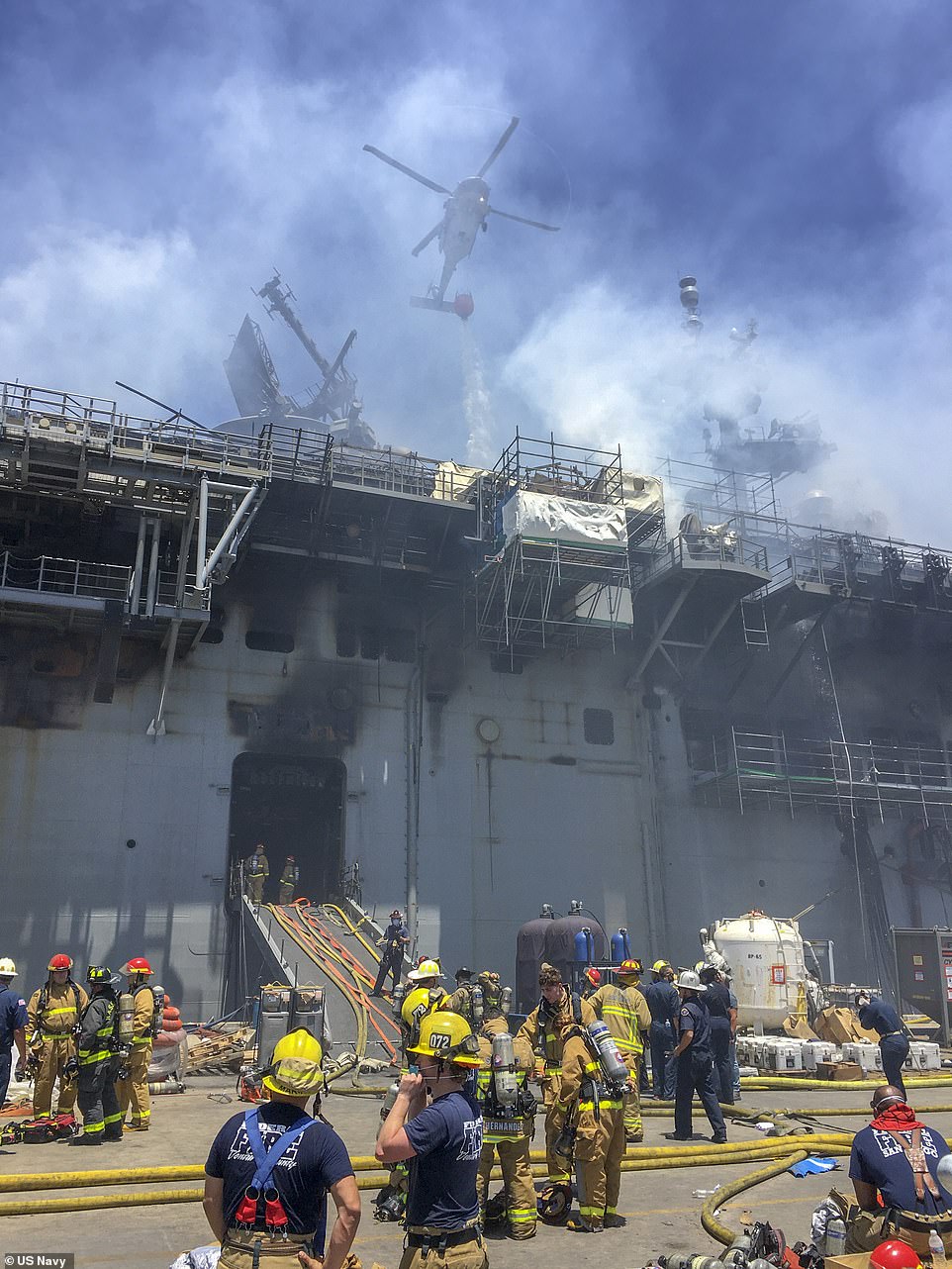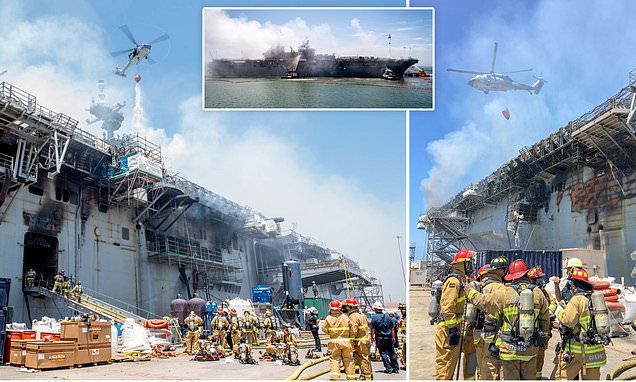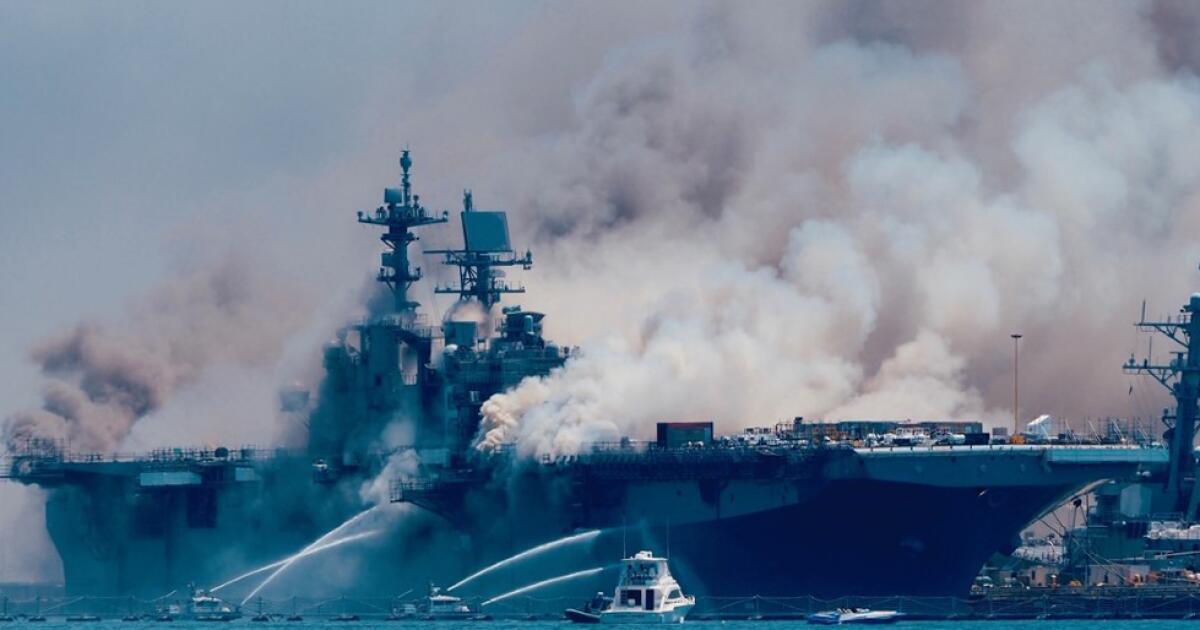A rapidly extinguished fire aboard the amphibious assault ship Kearsarge prompted the Navy to issue a “stop work order” Friday to
General Dynamics NASSCO shipyard in Norfolk, Naval Sea Systems Command told Defense News Saturday.
The incident started when a spark from welding landed on nearby material, which was then quickly put out by the fire watch. Fire watch is a sailor or contractor who stands nearby with a fire hose and/or extinguisher to stop a larger blaze in its tracks.
In a statement, Naval Sea Systems Command spokesman Rory O’Connor said the “stop work” was to ensure the company followed fire safety protocols.






